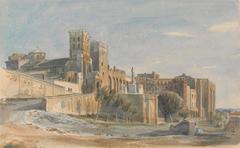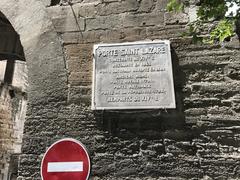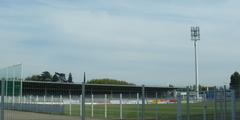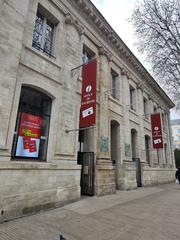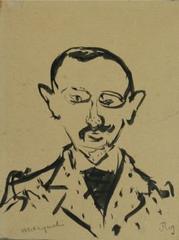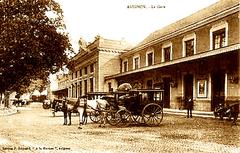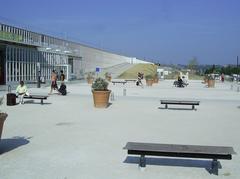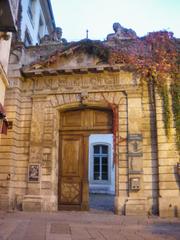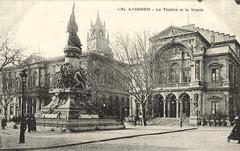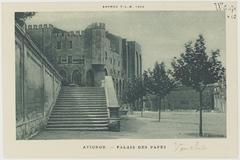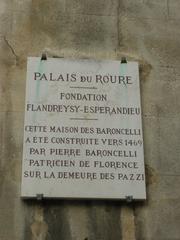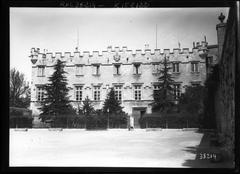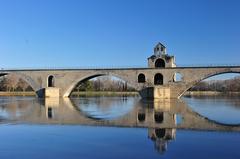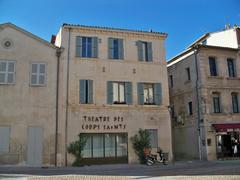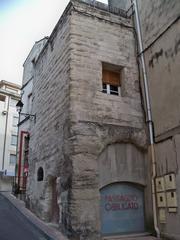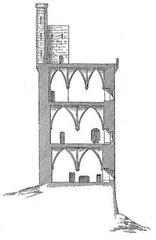
Temple Saint Martial Avignon: Visiting Hours, Tickets, and Travel Guide
Date: 04/07/2025
Introduction
Located in the very heart of Avignon, the Temple Saint Martial is a captivating monument that embodies the city’s storied past and vibrant present. From its origins as a royal palace commissioned in the 14th century, to its transformation into a Benedictine monastery, secular civic hub, and now an active Protestant temple, this site is a remarkable testament to Avignon’s religious, political, and cultural evolution. Today, it stands not only as a vital place of worship but also as a lively venue for concerts, especially during the renowned Festival d’Avignon. Its Southern French Gothic architecture, layered history, and central location make it a must-visit for anyone exploring Avignon’s heritage (Temple Saint-Martial Avignon: Visiting Hours, Tickets, History, and Attractions, Temple Saint Martial Avignon: Visiting Hours, Tickets & Architectural Highlights, Temple Saint Martial Avignon: Visiting Hours, Tickets & Historical Significance).
Contents Overview
- Introduction and Historical Timeline
- Architectural Features and Artistic Highlights
- Visiting Information (Location, Hours, Tickets, Accessibility)
- Guided Tours, Events, and Festival d’Avignon
- Nearby Attractions
- Religious and Cultural Significance
- Visitor Etiquette and Facilities
- Frequently Asked Questions (FAQ)
- Contact Information
- Summary & Visitor Recommendations
- Sources
Historical Timeline
Royal and Monastic Beginnings
The foundation of Temple Saint Martial dates back to the 14th century, when it was erected as a palace for Queen Jeanne I of Naples. Strategically located by the papal city walls, the site later became the property of Pope Urban V who granted it to the Benedictines of Cluny in 1363. Cardinal Pierre de Cros established a college here in the late 14th century, marking the start of its religious prominence. The church, completed in 1388, was designed by Pierre Morel, echoing the architectural innovations of the Avignon Papacy era.
Revolution and Secularization
The French Revolution brought dramatic change. The monastic community was disbanded, and the complex repurposed for state functions: gendarmerie barracks, repositories for confiscated art and manuscripts, and eventually the nucleus of the Muséum Calvet. The grounds housed natural history collections and a botanical garden, laying the groundwork for Avignon’s scientific and educational legacy.
Protestant Transformation and Modern Role
In 1881, the city of Avignon assigned the former church to the Protestant community, who inaugurated it as a temple in 1883. Much of the original Catholic ornamentation was removed, and the interior was simplified in accordance with Reformed worship traditions. Since then, Temple Saint Martial has remained a central hub for Protestant worship and community activities, while also opening its doors to cultural events and concerts.
Architectural Features and Artistic Highlights
Exterior Elements
Temple Saint Martial exemplifies Southern French Gothic architecture (architectureofcities.com). Its facade is marked by pointed arches and buttresses that support the tall, slender walls, allowing for dramatic verticality. Flying buttresses and pinnacles, though less elaborate than those of the Palais des Papes, create a striking silhouette. Remnants of the original cloister can be found in the adjacent public park, offering a tranquil counterpoint to the stonework.
Interior Highlights
The church’s single nave features ribbed vaulting and tall lancet windows, once home to vibrant stained glass, now mostly lost. Carved capitals, stone tracery, and subtle sculptural fragments survive as reminders of its medieval past. The acoustics are highly regarded, making the temple a favored venue for organ concerts and choral performances, especially during the Festival d’Avignon (Festival d’Avignon official site).
Conservation
As a registered Monument Historique since 1911, the site is subject to ongoing preservation efforts. Restoration focuses on maintaining the integrity of its Gothic structure and safeguarding fragile elements (provenceguide.com).
Visiting Information
Location
Temple Saint Martial
2 rue Henri-Fabre / 2 rue Jean-Henri Fabre
84000 Avignon, France
Adjacent to the Office du Tourisme and the Square Agricol Perdiguier, the temple is centrally located and easily accessed by foot from Avignon Centre train station.
Opening Hours
- General Hours: Tuesday to Sunday, 10:00 AM – 6:00 PM
- Closed: Mondays and some public holidays
- Note: Hours may vary for religious services, festivals, or restoration. Always check official tourism sources or event pages before your visit.
Tickets and Entry
- Admission: Free (donations welcome)
- Special Events: Some concerts or guided tours may require tickets; purchase through official event or festival websites.
Accessibility
- Mobility: Main entrance is street-level and accessible. Ramps are available; however, the cloister ruins and some areas have uneven ground.
- Facilities: Restrooms available during events. No cloakroom service.
Guided Tours, Events, and Festival d’Avignon
- Guided Tours: Offered periodically, especially during heritage days and the Festival d’Avignon. Check with Avignon’s Tourist Office or temple administration for schedules.
- Concerts/Events: Regular organ recitals and cultural events are hosted throughout the year. The temple is a featured venue each July during the Festival d’Avignon.
- Tickets for Festival: Book early via the festival website, as popular events sell out quickly.
Nearby Attractions
Combine your visit to Temple Saint Martial with these major Avignon landmarks:
- Palais des Papes: The world’s largest Gothic palace and a UNESCO site.
- Pont Saint-Bénézet (Pont d’Avignon): The iconic medieval bridge.
- Musée du Petit Palais: Home to Renaissance and medieval art.
- Place de l’Horloge: The city’s bustling central square.
- Rue de la République: Main shopping street with cafés and boutiques.
Numerous restaurants and bakeries nearby make it easy to enjoy local cuisine between stops.
Religious and Cultural Significance
As an active Protestant church, Temple Saint Martial is affiliated with the United Protestant Church of France. Regular services, baptisms, weddings, and community gatherings are held here, fostering a sense of belonging among Avignon’s Protestant minority. The temple’s history of adaptation—serving royal, monastic, secular, and Protestant communities—embodies the city’s resilience through centuries of upheaval (visite.fr).
Beyond worship, the temple serves as a bridge for interfaith and civic dialogue, and its role as a cultural venue promotes social cohesion and openness.
Visitor Etiquette and Facilities
- Respect Services: As a place of worship, modest dress and quiet behavior are expected. Photography is restricted during services or performances.
- Event Conduct: For concerts and shows, standard etiquette applies—arrive on time, silence devices, and refrain from food or drink inside.
- Accessibility Needs: Contact staff ahead of your visit to arrange special assistance if required.
Frequently Asked Questions (FAQ)
Q: What are the opening hours?
A: Typically Tuesday–Sunday, 10:00 AM–6:00 PM. Check ahead for updates during holidays or events.
Q: Is there an entry fee?
A: General admission is free; donations are appreciated. Event tickets may cost extra.
Q: Are guided tours available?
A: Yes, especially during festivals and heritage days. Confirm schedules locally.
Q: Is the temple wheelchair accessible?
A: The main entrance is accessible; some areas may have uneven ground.
Q: How can I attend concerts or festival events?
A: Check the Festival d’Avignon website for the latest schedule and ticketing.
Q: What’s the best way to get there?
A: On foot from Avignon Centre train station (10 minutes) or by local bus. Parking is available in public lots nearby.
Contact Information
Festival d’Avignon
Cloître Saint-Louis
20 rue du Portail Boquier
84000 Avignon, France
Tel: +33 (0)4 90 27 66 50
Official festival website
Summary & Visitor Recommendations
Temple Saint Martial is a living chronicle of Avignon’s shifting identities. Its Gothic architecture and layered past offer insights into the city’s royal, monastic, revolutionary, and Protestant epochs. As a cultural venue—especially during the Festival d’Avignon—it draws visitors into a dynamic blend of spirituality, history, and the arts. Free admission, accessibility, and central location make it ideal for all visitors. For a deeper experience, combine your visit with nearby landmarks and check official event calendars for concerts and festivals. To enhance your exploration, download the Audiala app for guided audio tours and stay updated on Avignon’s latest cultural happenings.
Sources
- Temple Saint-Martial Avignon: Visiting Hours, Tickets, History, and Attractions
- Temple Saint Martial Avignon: Visiting Hours, Tickets & Architectural Highlights
- Temple Saint Martial Avignon: Visiting Hours, Tickets & Historical Significance
- Temple Saint Martial Avignon: Visiting Hours, Tickets, and Cultural Highlights, Festival d’Avignon Official Site






